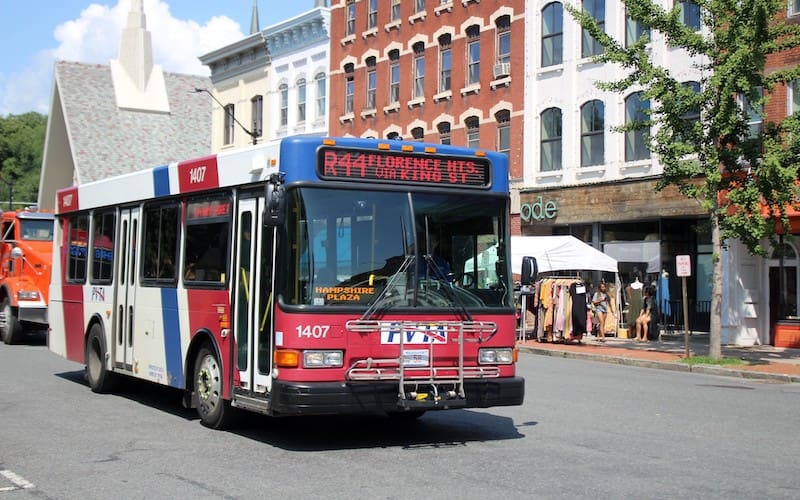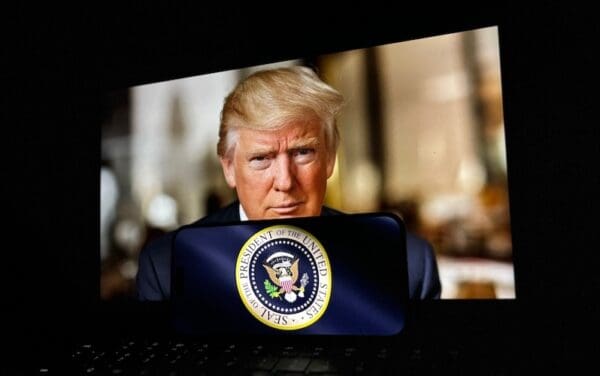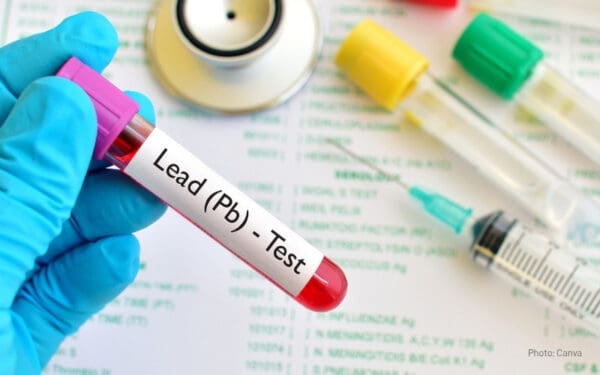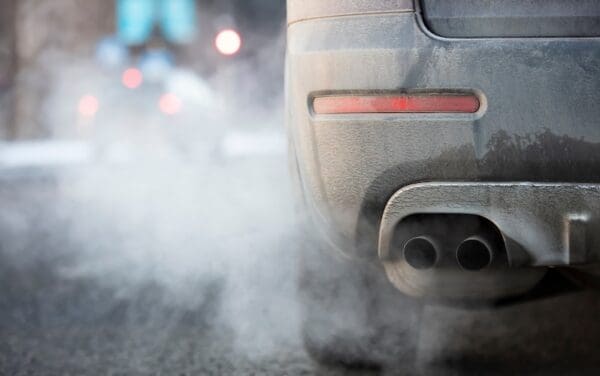
We can design a transit system that works for us – one that gives us the choice on how to get where we need to go. Photo: MTA3306, Flickr.
No matter where you live in New England, getting to work, the grocery store or the doctor’s office is harder than it should be. If it’s not for you, then consider neighbors, friends, or family members who don’t have a car. Or maybe a teenager without a driver’s license trying to get a summer job.
In Boston, Massachusetts, it might mean spending an hour in traffic to travel just a few miles. In rural Aroostook County, Maine, it could mean driving one or two hours to the nearest hospital or large grocery store because there’s no widely accessible public transit.
It doesn’t have to be this way.
Right now, Maine and Massachusetts are considering a commonsense solution that could change how our region invests in the future. Let’s dig into why our current system isn’t serving us – and how we can flip the script to better transportation planning in New England.
Limited Options Hurt Our Wallets, Health, and Environment
We all want clean air and safe, reliable ways to get where we need to go. We also want more time for what matters – family, friends, work, and the things we love. When our transportation system works for us, we have less stress, healthier communities, and more freedom to build the lives we want.
But as it stands today, how we get around is doing more harm than good. Gas- and diesel-powered vehicles pack congested highways, pumping out pollutants that dirty the air and overheat the planet. Exhaust fumes are filled with air toxins that clog our lungs with smog. These inhaled toxins are linked to respiratory illnesses like asthma, and they aggravate heart and lung disease. On top of hurting our health, these fuels damage the climate – worsening extreme weather, pushing temperatures to new highs, storms to new extremes, and so much more.
And that pollution comes with an expensive price tag. AAA estimates that owning a gas-powered car costs $12,297 annually, assuming a mileage of 15,000.
Switching to electric cars and trucks helps. They have no tailpipes and don’t burn dirty fuels, which means less noxious and climate-warming fumes. And studies show that electric vehicles can cost half as much to drive and maintain as their gas-powered counterparts.
But some people can’t afford to lease, loan, or buy a new or used car, electric or otherwise.
And everyone deserves access to work, healthcare, and community – no matter their income or ZIP code.
Time to Flip the Script on Transportation Planning in New England
But there’s hope.
What if our transportation systems didn’t pollute the air but helped clean it? What if instead of trapping us in traffic, they gave us real choices for how to get around?
Almost every state in the region has set ambitious targets to slash climate pollution, and yet, each state is pouring billions into transportation systems that still aren’t meeting their residents’ needs. And at the same time, there are no mechanisms in place to ensure that how we spend transportation dollars helps us actually meet the climate targets set by law.
Promising Laws to Set Us on the Right Track
Legislatures in Massachusetts and Maine are considering laws that would create a straightforward solution: Make sure transportation projects align with the states’ existing commitments to reduce climate pollution.
The bills would require the government to measure new transportation projects’ estimated pollution before approving them. If those transportation projects push harmful emissions above the state’s established limits, agencies would have to change their plans. They could either opt for cleaner projects that generate less pollution or invest in additional projects that help offset the impact – like expanding public transit, electrifying buses, or building safer bike and pedestrian paths. In other words, if a proposed project increases pollution too much, it must be swapped for a cleaner one or paired with others that counter the increase.
This screening approach wouldn’t stop road projects. It wouldn’t ban driving, and it wouldn’t limit drivers’ choice. Instead, it would ensure our transportation decisions do more good than harm — protecting public health, reducing emissions, and giving our communities more options to get where we need to go.
These Solutions Matter Regardless of Where You Live
Too often, rural areas get left out of the transportation conversation. Worse, they’re used as an excuse to keep building roads — as if that’s the only way to “connect” small towns. But building more highways through rural landscapes can destroy farmland and erode the character that defines so many New England communities. Not only does road infrastructure fail to deliver the reliable access people need, but it’s also often neglected or unmaintained, leading to unsafe road conditions and an ever-growing list of maintenance needs in the state budget. Smarter transportation investments in rural neighborhoods could mean:
- Sidewalks and crosswalks in town centers
- Local bus routes or on-demand shuttles
- Regional transit hubs co-located with housing and retail
- Bike and walking paths that connect people to jobs, schools, and healthcare
And it could mean freedom from being forced to drive everywhere, especially for the 30% of people who do not drive due to age, disability, or other reasons. This isn’t just an urban issue. It’s about giving all communities the right tools to thrive.
Take Action
Simply put, transportation projects must prove they won’t worsen pollution before moving forward. That’s exactly what these laws propose. They are a simple, commonsense step with the power to make a big difference in how transportation planning works in New England.
Ask your lawmakers to support the bills that would allow our governments to truly consider a transportation project’s impact. It’s a simple step that could make a big difference – helping your state choose projects that reduce pollution and give everyone better ways to get where they need to go.
Let’s make sure our transportation dollars are working for us – building a future that’s cleaner, healthier, and more connected.



